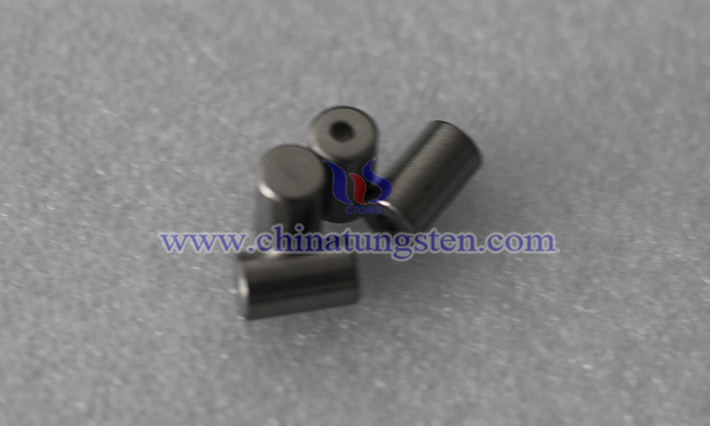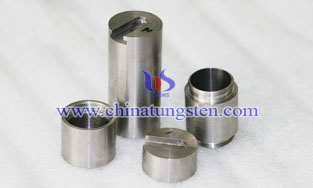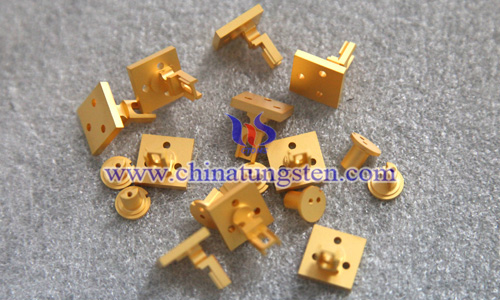Preparation of Barium Tungsten Electrode by Impregnation Method
- Details
- Category: Tungsten Information
- Published on Friday, 11 April 2025 13:39
- Hits: 124
The preparation of barium tungsten electrode by impregnation is a process commonly used in electron emission materials (such as hot cathodes). By impregnating active barium compounds into porous tungsten substrates, composite electrodes with high-efficiency electron emission performance are formed. The following is a detailed preparation process and key points:
1. Preparation of Porous Tungsten Substrate
Method: Powder metallurgy technology is used.
Raw materials: High-purity tungsten powder (particle size is selected according to pore requirements).
Molding: Form a porous preform by pressing through a mold (such as isostatic pressing).
Sintering: High-temperature sintering (usually 1400-1600°C) in a hydrogen or vacuum environment to form a tungsten skeleton with interconnected pores, and the porosity is usually controlled at 20-40%.

2. Preparation of Impregnation Solution
Barium salt selection: Commonly used barium nitrate (Ba(NO₃)₂), barium carbonate (BaCO₃) or barium aluminate (such as Ba₃Al₂O₆).
Solvent: deionized water or organic solvent (such as ethanol), solubility and subsequent decomposition temperature need to be considered.
Concentration optimization: adjust the concentration (such as 5-20 wt%) according to the target loading amount to avoid crystallization blocking the pores after impregnation.
3. Impregnation Process
Vacuum/pressure impregnation: place the porous tungsten substrate in the impregnation solution, and vacuum or pressurize (such as 5-10 MPa) to ensure that the solution fully penetrates the pores.
Time control: The impregnation time is usually several hours to tens of hours, depending on the pore structure and solution viscosity.
4. Drying and Heat Treatment
Drying: slowly remove the solvent at low temperature (60-100°C) to prevent rapid evaporation and cracking.
Decomposition sintering: stepwise heating in a reducing atmosphere (such as H₂) or vacuum:
Stage 1: 300-500°C to decompose nitrates (such as Ba(NO₃)₂ → BaO + NO₂↑ + O₂↑).
The second stage: high temperature sintering (1200-1500°C) allows BaO to combine with the matrix to form a stable structure.

5. Post-Treatment and Activation
Surface treatment: mechanical polishing or chemical etching is performed when necessary to improve the surface morphology.
Activation treatment: heating to the working temperature in a vacuum or inert atmosphere to promote the migration of barium to the surface to form an active emission layer.
6. Key Parameters and Precautions
Pore structure: needs to be uniform and connected, which can be regulated by pore formers (such as ammonium carbonate).
Atmosphere control: avoid barium oxidation, decomposition and sintering stages need to be carried out in an inert or reducing atmosphere.
Multiple impregnation: if the loading is insufficient, the impregnation-sintering steps can be repeated, but pore blockage must be avoided.
Toxicity protection: barium compounds are toxic, and protective equipment must be worn in a fume hood when operating.
7. Application and Advantages
Application scenarios: widely used in hot cathodes of vacuum electronic devices (such as traveling wave tubes and magnetrons).
Advantages of the impregnation method: simple process, low cost, precise control of the distribution of active substances, and suitable for complex porous structures.
8. Characterization and Testing
Structural analysis: SEM observation of pore distribution, XRD detection of phase composition.
Performance testing: electron emission efficiency (such as current density test), high temperature resistance and life evaluation.
- Chinatungsten Online: www.chinatungsten.com
- CTIA GROUP LTD: en.ctia.group
- Tungsten News & Price: www.ctia.com.cn
- Molybdenum News & Price: news.molybdenum.com.cn
- Tel.: 86 592 5129696; Email: sales@chinatungsten.com








 sales@chinatungsten.com
sales@chinatungsten.com